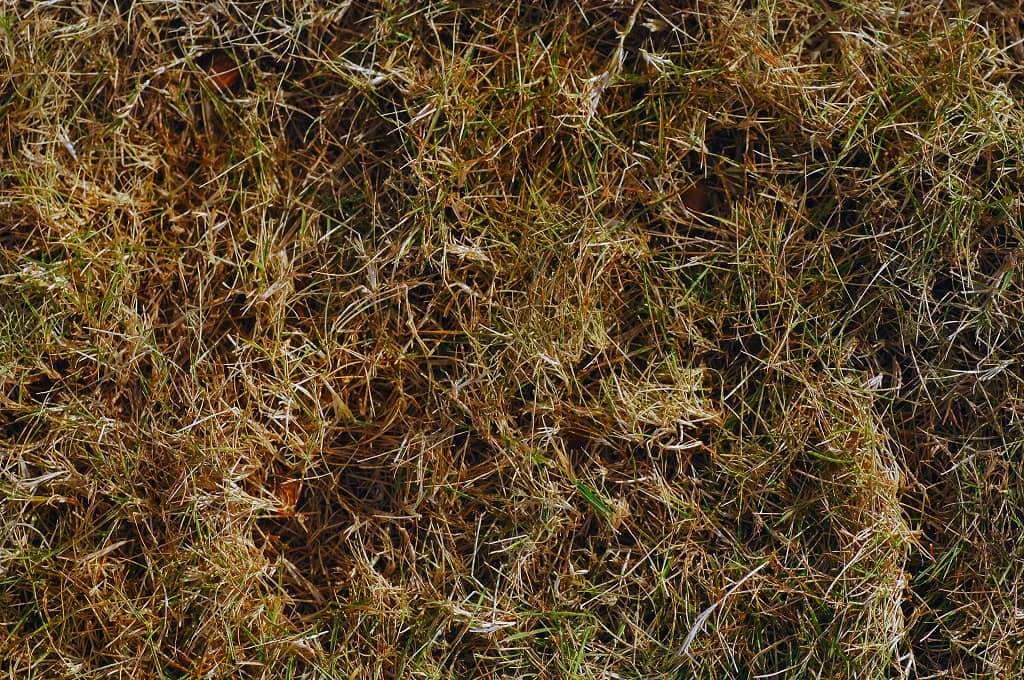
- Sun, Jan 2021
- |
- Moran’s Landscaping & Excavation LLC
Taking care of your lawn during the winter season is a must. If you want to have a lush green lawn for this upcoming spring, it’s best you know when does grass stop growing!
Importance of Knowing Your Lawn’s Growth Pattern
Wondering what’s the secret to a beautiful lawn for springtime?
Preparation.
Believe it or not, keeping track of your lawn’s growth patterns can surely help you achieve this without any problem.
Being aware of your grass growth pattern is essential. By doing so, you’ll be able to determine which is the type of grass you have, when to cut it, and what’s the ideal grass height for each type. Not only that, but you’ll also prevent problems such as snow mold and rodents.
There are two main grass types: cool-season grasses and warm-season grasses.
Cool-season grasses include species such as the Kentucky bluegrass and ryegrasses. Warm-season grasses, on the other hand, include Bermuda grass and Centipede grass.
Below, you can see a chart we made that states which is the ideal height when cutting the grass before the cold weather arrives:
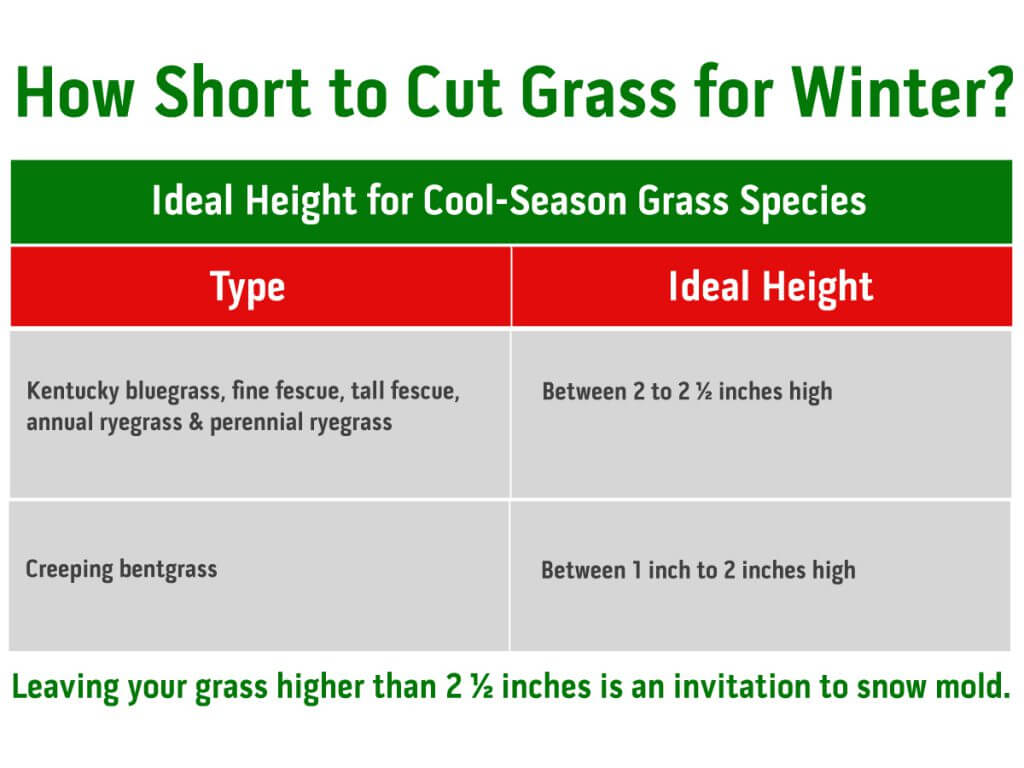
Along with knowing how your grass grows, you must also know the proper mowing technique for the upcoming winter months. That is, you should avoid mowing more than ⅓ of the blades’ height at a time.
When Does Grass Stop Growing?
So, when does grass stop growing? Well, this depends on the weather in which you live. Usually, grass stops growing whenever the temperature drops lower than 50 degrees Fahrenheit. While in some places, this typically happens between October and November, this can even occur until December in other locations.
Although it might seem that your lawn has simply given up on life during this month, it’s actually just asleep. During these colder months, the grass is dormant because it doesn’t get the amount of nutrients, light, water, and heat it needs.
In other words, when your lawn doesn’t get the right amount of the elements it needs, it stops growing as a way to save its resources.
Also, along with the winter months, certain types of grass tend to become dormant for a short period of time during the middle of summer. This is due to the droughts that happen around this time of year. However, you can prevent this dormancy period by counting on the right sprinkler irrigation system.
Moreover, just like a lawn’s growth slows down during the winter, it speeds up during the late spring and early summer.
How to Identify If Your Grass Is Dormant or Dead ?
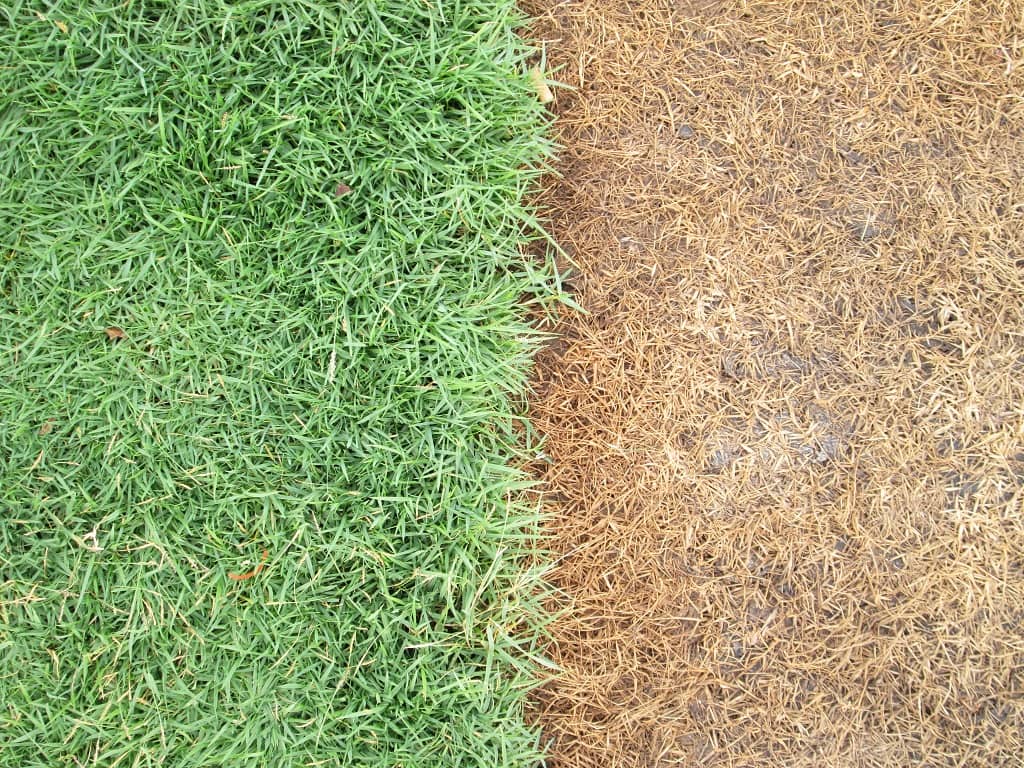
Although dormant grass isn’t dead grass, you need to be able to recognize if your lawn is dormant or dead.
Unlike dead grass, dormant grass still can perform its normal functions, such as absorbing nutrients and doing photosynthesis. Dead grass, on the other hand, won’t do these things.
You can recognize if your grass is dead or not by noticing when it starts to lose its vigor. For instance, if you see that your lawn stopped growing around October or November, then it’s very likely that it’s just dormant.
Do You See Brown Spots in Random Places?
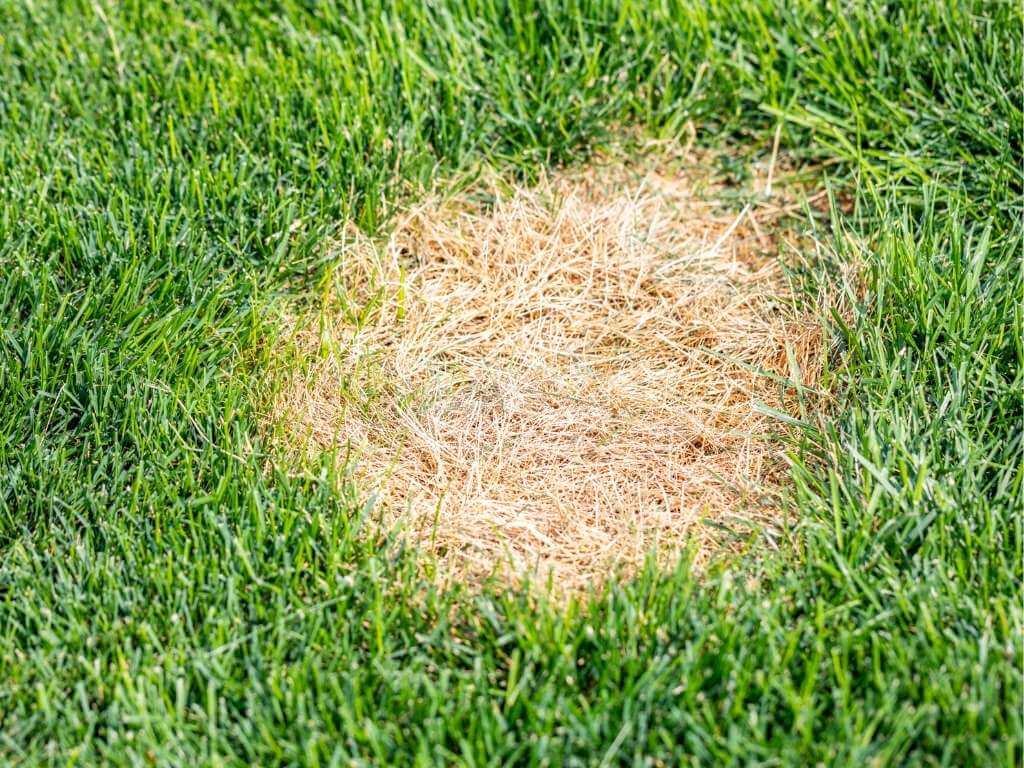
You can tell the difference between dormant grass and dead grass by noting the following. When grass goes dormant, it changes color uniformly. But, if your grass has brown spots among fields of green, it’s dying.
Apply the Tug Test to Learn if Grass Is Dead
This test can be used to find if the grass is dead or dormant. Pick up a section or spot where the grass is brown.
Grab a handful of grass and pull it. If the grass plants are pulled out from the ground easily, they’re dead.
If the grass resists and you have to work hard to pull the blades out of the ground, you’ll not have to worry about a dead lawn.
Take a look at the roots of the handful of grass you pulled.
Do they look white?
If so, there is a chance the grass is still alive and dormant.
But if the grassroots are grayish, the grass is dead, and it’s not coming back during spring.
How Long Does Grass Stay Dormant?
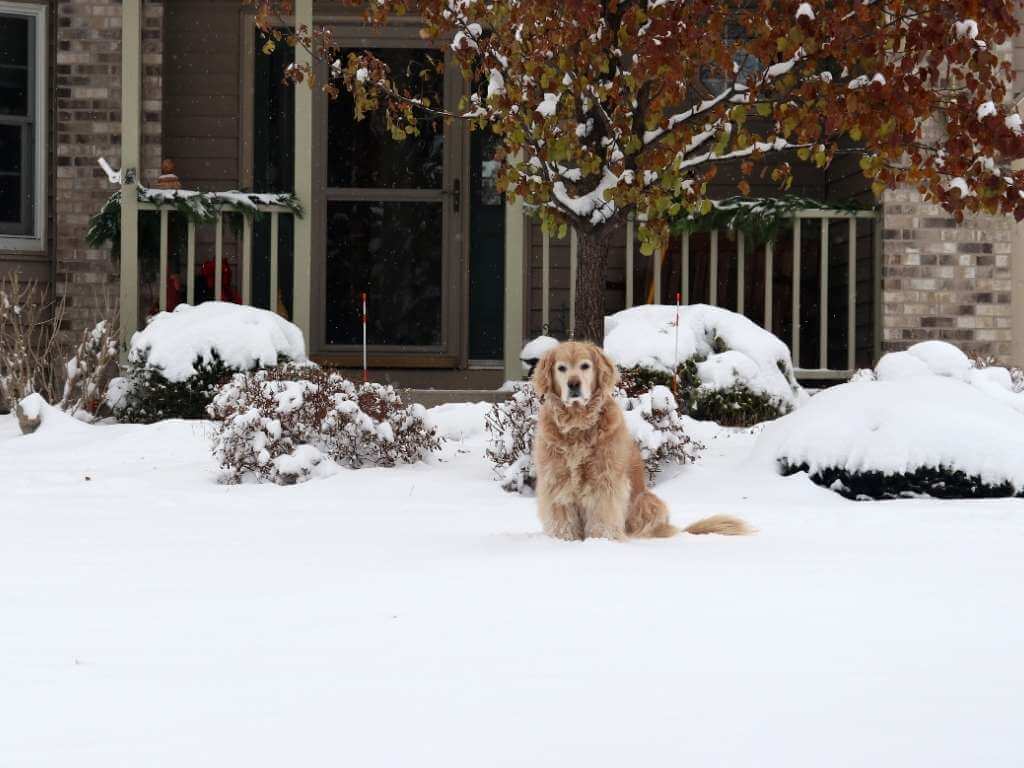
Well, there are two types of dormancy during winter and summer.
But since we serve nearby customers in Washington State, our main focus is on winter dormancy. This dormancy type lasts longer.
Grass can stay dormant all winter long and survive under a blanket of snow. Of course, you must prepare your lawn to survive dormancy without getting snow mold or becoming the nest of rodents.
Even though your grass has an easier time with winter dormancy, it’s a good idea to keep it healthy and with strong and deep roots. This increases the chances of welcoming spring with your grass ready for the growing season.
Winter Lawn Care Tips while the Grass is Dormant
Don’t Allow Anyone to Walk Over Your Frozen Grass
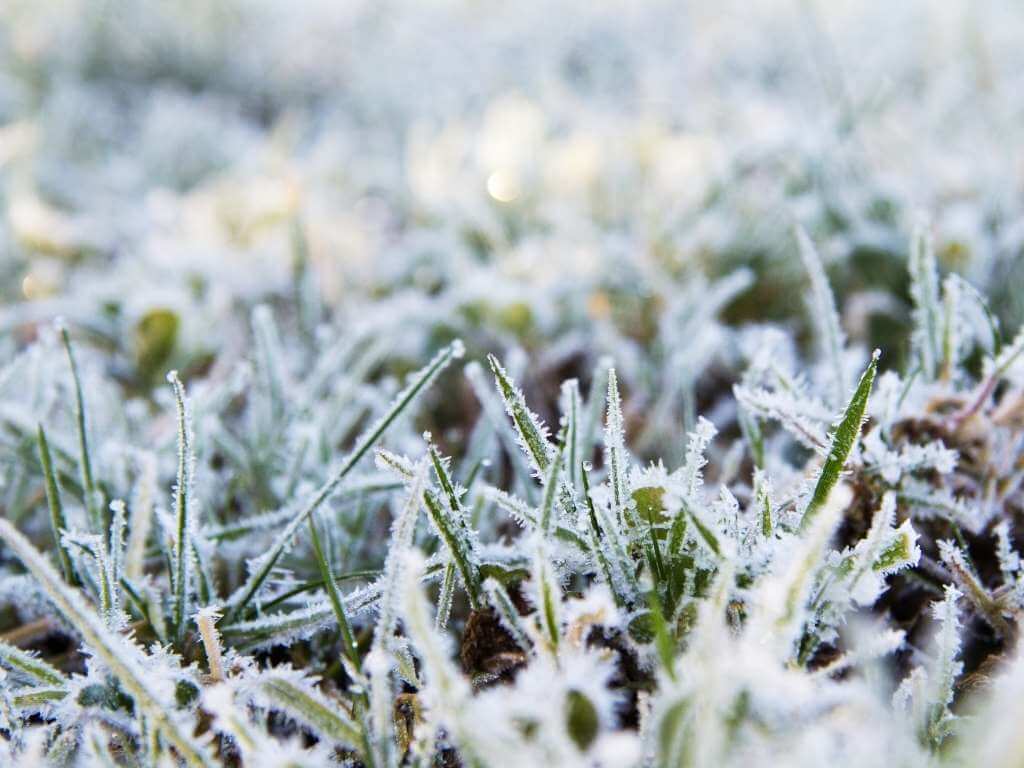
If you want to have a healthy-looking lawn in the spring, don’t allow anyone to walk over your frozen grass.
When the grass is covered with ice or frost, grass blades become brittle and fragile. When someone walks over grass blades, they snap.
And during spring, you’ll notice brown, foot-sized prints that resulted from the damage.
Avoid Damage from De-Icing Products
Be careful when using de-icing products to treat walkways across or near the edges of your lawn. Some de-icing products contain salt, which will damage your grass.
To avoid salt damage to plants, we recommend choosing products that contain potassium chloride and magnesium chloride.
Potassium chloride is a fertilizer. If you use it appropriately, it works also as an effective de-icer and it’s safe for your landscape. We recommend spreading no more than 5 pounds per 100 square feet.
Magnesium chloride is the most plant-safe ice melting option. We recommend spreading 1 or 2 pounds per 100 square feet.
Also remember to never pile up snow on your grass when shoveling the front sidewalk and the street after a heavy snowfall.
Here’s the thing:
This snow may contain residue from roadway de-icing treatments, which is prejudicial for your grass.
Welcome Spring with a Lawn that’s Ready to Grow!
If you think that during winter your lawn doesn’t need care, you’re mistaken.
We shouldn’t neglect the lawn, especially during winter.
But to provide the right lawn care during the winter season, it’s best you know when does grass stop growing!
We recommended using the proper mowing techniques before the winter months.
Also, don’t allow people to walk carelessly over your frozen grass since they are ruining it. Last but not least, be careful with de-icing products.
Since you made it here, it means that you’re committed to having a healthy and lush lawn. We know you’ll achieve it. Stay tuned so that we guide you to achieve the garden of your dreams.
